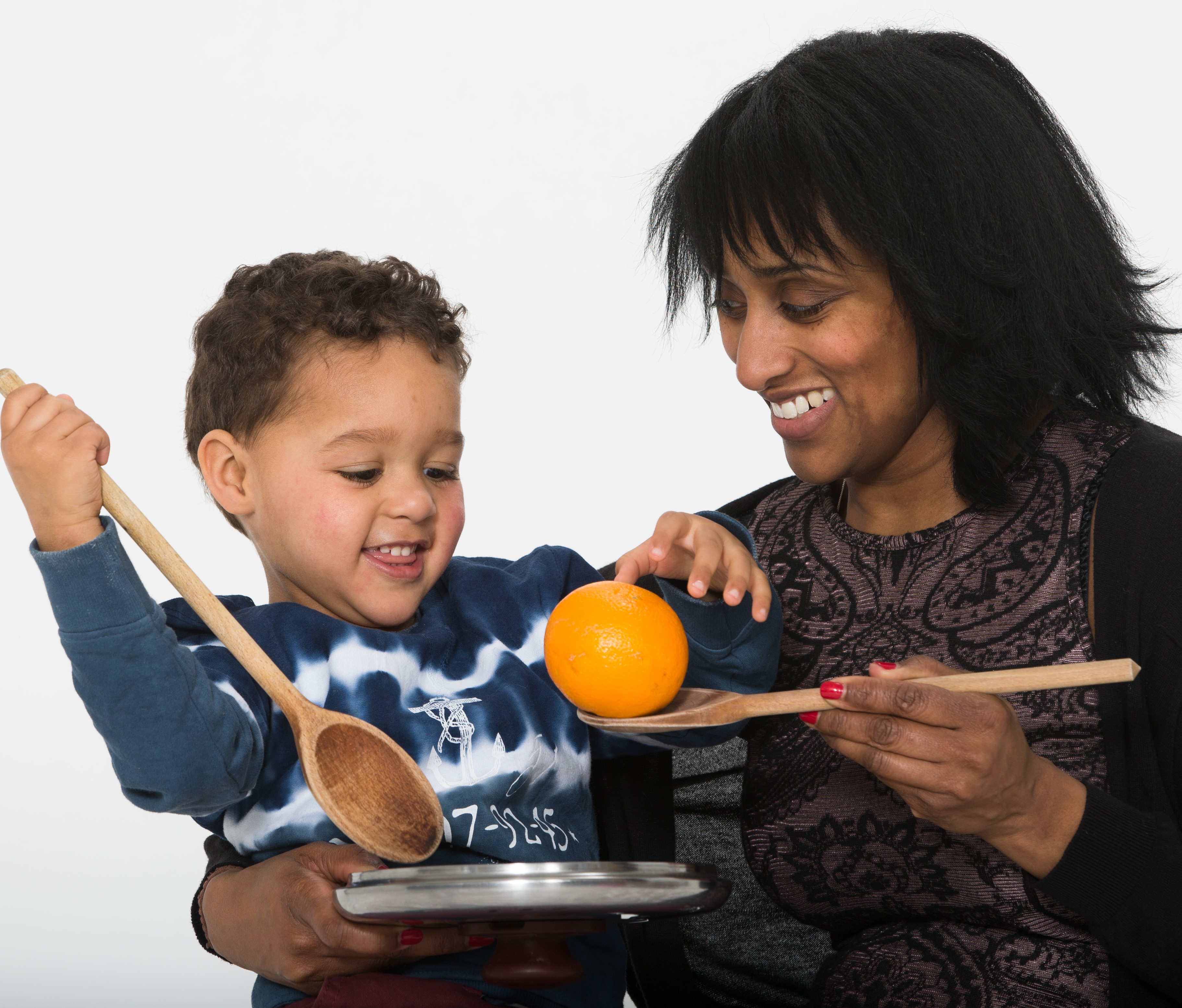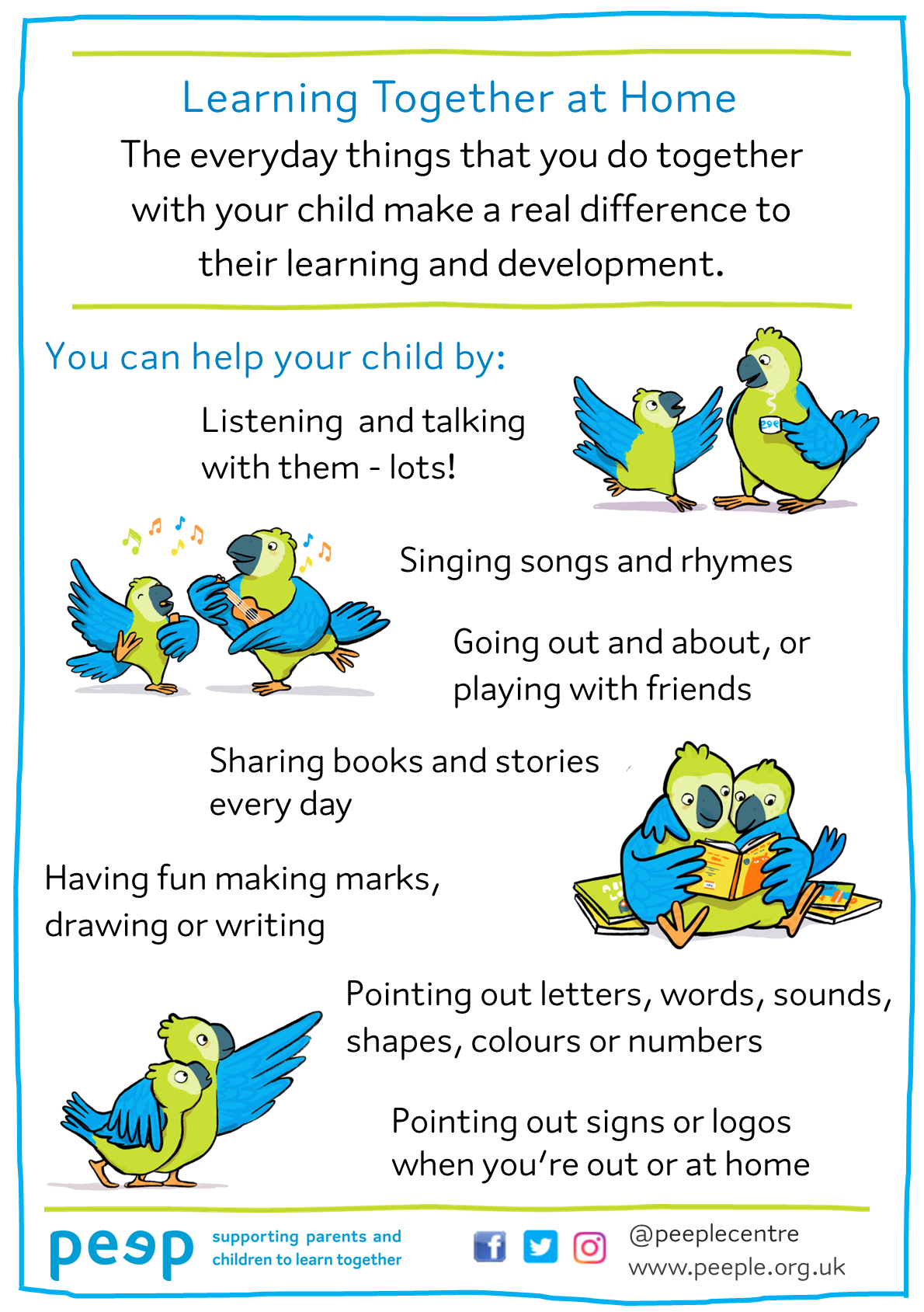Green
the home learning environment - how it helps children's development
Research highlights the importance of a stimulating Home Learning Environment (HLE) in supporting children’s early learning and development.
how play supports the home learning environment
Children play in many different ways depending on their interests and age/developmental stage. The different types of play often overlap, and children switch between them randomly and rapidly as they explore and try out new ideas, feelings and relationships through their play.
Research shows that the early years are crucial for brain development (though it's never too late to make a difference, so never give up!). Opportunities to explore and discover through play help with this process. Positive and supportive attachments between children and their parent/carer help them to feel confident in exploring and making choices.
When parents/carers observe their children playing, they discover what their children are interested in. Providing play opportunities that reflect these will encourage children to engage with activities and build their concentration. Being alongside children, so they can see that their parents/carers are interested, will also encourage children to stay focused. Children who are able to explore freely, can use their senses to discover how natural and everyday objects look, sound, feel, smell and taste, what the objects do, and how they can play with them. Babies will learn that there is no right or wrong way to play with things. They gradually learn that some things work and some don’t!
Coping with strong emotions resulting from success or challenges can be difficult, especially for young children. Play can be serious or fun, and it allows babies and children to find out about themselves and their world. Play should provide a safe opportunity to practise for life.
Peep Learning Together Programme sessions are play-based, with lots of ideas for activities that parents/carers and their children can do together which are fun as well as supporting learning and relationship-building.
how songs and rhymes support the home learning environment
Singing and using rhymes are great ways for parents and carers to share and explore language with their babies and young children. Research shows that from birth babies are ready and able to communicate with and mimic other people. Singing together supports this. Becoming familiar with the sounds and rhymes in songs’ words and phrases is an important part of language development and (later) of learning to read.
When singing near their baby, parents usually have a softer, more emotional tone, sing more slowly, and leave pauses to see what the baby will do in response. Research shows that when parents/carers sing to them, the baby will often be attentive and engaged, listening with more alert concentration than to the spoken word. Singing and chanting songs and rhymes can draw people together as well as encouraging them to be expressive individuals. Letting children choose songs to sing helps to build positive self-esteem.
Music underpins all of the Peep Learning Together Programme strands. In Peep sessions we sing familiar and new songs. Parents and carers sometimes need support and reassurance to sing with their babies and children, especially in group situations. Many of us (including practitioners) feel embarrassed singing in public, especially if we think that we're not very tuneful. Understanding that babies and children (or others in the group!) don't mind how tuneful we are - just as we're not put off by other people's singing - but that it's great fun, can make a difference.
how conversation supports the home learning environment
Babies try hard to communicate, and they need recognition of their efforts. Parents and carers are often best placed to show this, as they usually understand their baby’s ‘speech’ long before others are able to do so. Babies and young children also need opportunities to hear sounds clearly, and it can help not to have background noises (such as television) some of the time. Babies and young children need to hear lots of language to build up a bank of words and meanings before they start to talk.
Research tells us that children’s language development is really important to how well they do, at school and beyond. For example, we know that children’s language development at age two predicts their performance on school entry, and that children's vocabulary at age five is a key predictor of reading ability, mental health and employment challenges as an adult. However, research also tells us that the communication environment at home (the quantity and quality of everyday conversation) is a better predictor of early language than a child’s social background (Law et al, 2009).
Children who learn more than one language will benefit from hearing their ‘mother tongue’ because this is bound up with cultural identity and sense of belonging. Once this is established children are able to pick up other languages more readily.
how sharing books and stories supports the home learning environment
Sharing books and stories provides opportunities to:
- be together
- recognise and value how children engage with the story or pictures
- look and talk together about what characters are doing and feeling
- explore emotions and feelings, and encourage empathy
- enhance imagination and creativity
- extend children’s vocabulary and language, including story language (e.g. ‘I’ll huff and I’ll puff…’ ‘And the wild things roared their terrible roars…’)
- show how books work by turning pages, pointing to words, using pictures
- develop a life-long love of books and reading
Books include all types of reading materials – catalogues, board books, picture books, electronic books etc. Books and stories are a key element of the Learning Together programme and are an integral part of every session.
Click the links below to download two leaflets about it:
> Learning Together at Home handout for parents: PDF to print or PNG Image for screen
> How the Home Learning Environment supports children's learning - more detailed leaflet
- the positive impact of the everyday things that families do together
Feature box colour:


Side Quote Color:
TEST - PSED strand
Feature box colour:
Side Quote Color:
archive - early child development (scotland)
developmental unit - early child development
Please select according to where you will be delivering the unit:
Rest of the UK
Feature box colour:
Side Quote Color:
archive pre-schoolers (scotland)
Feature box colour:
Side Quote Color:
archive toddlers (scotland)
developmental unit - development of toddlers
Please select the link according to where you will be delivering this learning strand unit:
Rest of the UK
Feature box colour:
Side Quote Color:
archive babies (scotland)
developmental unit - development of babies
Please select the link according to where you will be delivering this developmental unit:
Rest of the UK
Feature box colour:
Side Quote Color:
archive HPD (scotland)
learning strand unit - health & physical development
Please select the link according to where you will be delivering this learning strand unit:
Rest of the UK
Feature box colour:
Side Quote Color:
archive EM (scotland)
learning strand unit - early maths
Please select the link according to where you will be delivering this learning strand unit:
Rest of the UK
Feature box colour:
Side Quote Color:
archive EL (scotland)
learning strand unit - early literacy
Please select the link according to where you will be delivering this learning strand unit:
Rest of the UK
Feature box colour:
Side Quote Color:
archive CL (scotland)
learning strand unit - communication & language
Please select the link according to where you will be delivering this learning strand unit:
Rest of the UK
